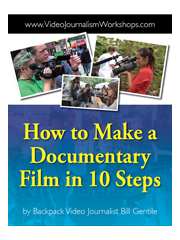MANAGUA, Nicaragua, 12 December 2015 — This is the newest generation of Nicaragua’s Backpack Video Journalists. They’ve completed my four-day workshop, titled, “Training the Trainers.” They are ready, not only to practice our craft, but also to pass it on the the next generation.
Good luck and stay safe.
— Bill Gentile
















